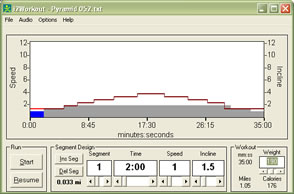'binge' now that sounds familiar, one month I am on the band wagon trying to get fit and the next I am finding it all a bit boring and feel as though I am not getting anywhere.
Jogging is something that I find impacts really hard on my cardio, as I stated earlier I could sit on a bike until the cows come home but ask me to jog down the drive way and I sound like darth vader on steriods. I started jogging about 6 months back but it only took two weeks and then my shins felt like someone was smashing them with a bat every time I walked for the following few months. I would be stoked to be able to do 45 mins on a treadmill without flying off the back and landing in a heap. I guess I'll just have to take my cup of cement and HTFU as my next spending spree probably wont be on an elliptical trainer (damn they're expensive) it will most likely be on scuba gear... I was thinking isotherm, seaquest balance, suunto d6, apeks xtx200, xtx40 occy and a few other bits an pieces, seems to be what most people are running down here and I have heard good things about this equipment.
Jogging is something that I find impacts really hard on my cardio, as I stated earlier I could sit on a bike until the cows come home but ask me to jog down the drive way and I sound like darth vader on steriods. I started jogging about 6 months back but it only took two weeks and then my shins felt like someone was smashing them with a bat every time I walked for the following few months. I would be stoked to be able to do 45 mins on a treadmill without flying off the back and landing in a heap. I guess I'll just have to take my cup of cement and HTFU as my next spending spree probably wont be on an elliptical trainer (damn they're expensive) it will most likely be on scuba gear... I was thinking isotherm, seaquest balance, suunto d6, apeks xtx200, xtx40 occy and a few other bits an pieces, seems to be what most people are running down here and I have heard good things about this equipment.





